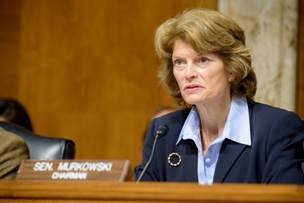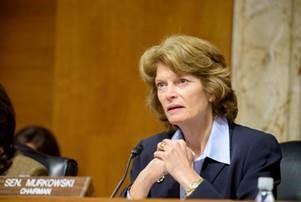Murkowski Highlights Important Work of USGS, Outlines Areas for Improvement
Washington, D.C. – U.S. Sen. Lisa Murkowski, R-Alaska, today conducted oversight of the U.S. Geological Survey (USGS) during a hearing that focused on the agency’s important mission, its current priorities, and core mandates that lack attention and resources. Murkowski frequently referenced her home state of Alaska during the hearing, where the USGS plays a critical role in helping residents cope with the daily threat of volcanic eruptions, earthquakes, and other natural hazards.
“I appreciate the work of the USGS and the spirit in which it is typically undertaken. The agency is known for being non-partisan, and for seeking out concrete scientific evidence. It is also comforting to know that the Survey is collecting and monitoring data that is vital to the safety and wellbeing of the American people,” Murkowski said.
Murkowski, chairman of the Senate Energy and Natural Resources Committee, pressed Dr. Suzette Kimball, Director of the USGS, on the issue of mineral security and the agency’s priorities when it comes to assessing the size of our domestic mineral resources.

Click picture to view video
“Even though minerals are more important to our modern society than ever before, we are paying less and less attention to them. That shows in the USGS budget, where not even 10 percent goes to the energy and minerals program. And it shows elsewhere, too: after the USGS reports our foreign dependence, it is very difficult to find anyone, anywhere in the federal government, who is responsible for doing anything to meaningfully reduce it,” Murkowski said. “It is frustrating to hear that the USGS has conducted mineral surveys on the other side of the world while there are assessments here in the U.S. that still need to be completed.”
Murkowski also highlighted the need for the USGS to have the resources and capacity to map the United States – and in particular, Alaska – at a useful scale.
Mr. Ed Fogels, Deputy Commissioner of Alaska’s Department of Natural Resources, testified that “statewide geologic mapping at a scale suitable for mineral or energy exploration activities has been completed over 17% of the state. While not sounding very substantial, this is equal in area to the state of Arizona, but the remaining area to be mapped is roughly equal to the combined area of California, Oregon, Washington, and Idaho. Unfortunately, at the current rate of geologic mapping this will take over 400 years (and possibly over 1000 years) to complete.” Mr. Fogels also testified about topographic, geologic hazard, hydrographic, and other types of data collection that are important – but incomplete – for Alaska.
Dr. Robert McCoy, Director of the Geophysical Institute at the University of Alaska Fairbanks, testified about the natural hazards that affect Alaska that fall under the purview of the USGS, including volcanoes; earthquakes; tsunamis; snow, ice, permafrost, and glaciers; and space weather. Dr. McCoy noted that “Throughout the winter months (weather permitting) residents of Alaska are treated to glorious displays of auroral activity. While unforgettably beautiful, this space weather effect plays havoc with a wide range of communication and navigation systems…Large magnetic storms can drive geomagnetically induced currents threatening power grids and potentially causing large area power outages.”
Witness testimony and archived video from Thursday’s hearing is available on the Senate Energy and Natural Resources Committee website.









